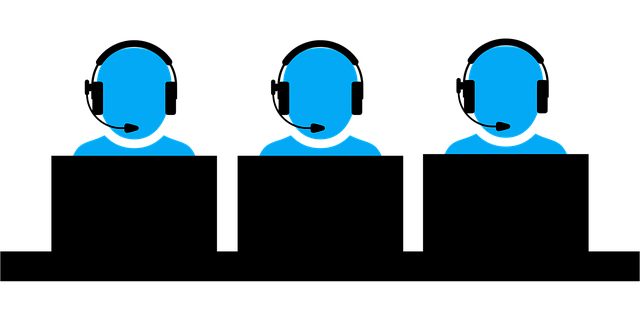Marketing automation for campaigns streamlines tasks, boosts efficiency, and enhances strategy. Integrating lead gen, nurturing, segmentation, and personalized content improves performance. Social media marketing automation engages customers across platforms while CRM integration offers customer insights for data-driven strategies. Automated workflows trigger strategic communications, increasing conversion rates. Integration with existing systems enables real-time data exchange and cross-functional communication. Integrated analytics tools measure campaign success through KPIs, optimizing future efforts based on insights.
Marketing automation has transformed how businesses execute campaigns, streamlining processes for enhanced efficiency. This article explores the power of marketing automation for campaigns, offering a comprehensive guide to optimize your strategy. We’ll delve into understanding the basics, identifying areas for automation, implementing workflows and triggers, integrating tools, and continually measuring success. By leveraging these steps, you can harness the full potential of marketing automation for effective campaign management.
- Understanding Marketing Automation Basics
- Identifying Key Campaign Areas for Automation
- Implementing Automated Workflows and Triggers
- Integrating Automation Tools with Existing Systems
- Measuring Success and Optimizing Campaigns Continuously
Understanding Marketing Automation Basics

Marketing automation for campaigns has become an indispensable tool for modern businesses, revolutionizing the way marketing teams execute and manage their strategies. At its core, marketing automation refers to using software to automate routine marketing tasks, enabling marketers to focus on more strategic aspects of campaign planning. This technology integrates various processes, from lead generation and nurturing to customer segmentation and personalized content delivery. By streamlining these activities, businesses can significantly enhance efficiency and improve overall campaign performance.
In the context of ecommerce solutions, social media marketing automation plays a pivotal role in engaging customers across multiple channels. Automated tools can schedule posts, manage ads, and analyze audience interactions on platforms like Facebook, Instagram, or Twitter. Moreover, integrating marketing automation with customer relationship management (CRM) systems allows for a holistic view of customer behavior, preferences, and purchase history. This data-driven approach ensures that marketing efforts are tailored to individual needs, fostering stronger customer relationships and driving campaign success in today’s competitive market.
Identifying Key Campaign Areas for Automation

In the realm of marketing automation for campaigns, identifying key areas to streamline is the first step towards efficient execution. Marketers should focus on processes that are repetitive, time-consuming, and prone to human error. This typically includes tasks like email marketing campaigns, lead nurturing sequences, and social media posting schedules. By automating these areas, businesses can save significant time and resources while ensuring consistent messaging across various channels.
One area that greatly benefits from automation is customer relationship management (CRM). Integrating CRM with marketing automation tools allows for seamless data flow between sales and marketing teams. This enables personalized communication with customers, improves lead conversion rates, and facilitates better tracking of campaign performance. Additionally, social media marketing automation can help schedule content in advance, allowing marketers to maintain a consistent online presence without the constant need for manual posting.
Implementing Automated Workflows and Triggers

Implementing automated workflows and triggers is a cornerstone of effective marketing automation for campaigns. By setting up pre-programmed actions based on specific events or behaviors, marketers can ensure that every touchpoint with the audience is strategic and timely. For instance, an automated workflow could send a personalized email sequence to leads who have not converted within a certain timeframe, followed by a missed call text back to reengage them. This level of personalization, combined with the efficiency of automation, makes campaigns more likely to convert prospects into customers.
Moreover, automated workflows can be integrated with various channels like email, SMS, and even social media platforms. In the context of e-commerce solutions, a trigger could automatically send targeted promotions via text message marketing to customers who have abandoned their carts. This not only recovers potential sales but also fosters customer loyalty by demonstrating responsiveness to their needs. By streamlining these processes, marketing automation frees up valuable time for marketers to focus on strategy and analysis.
Integrating Automation Tools with Existing Systems

Integrating automation tools with existing systems is a seamless process that forms the backbone of efficient campaign execution. Marketing automation for campaigns isn’t just about adopting new software; it’s about enhancing and harmonizing your current workflow. These automated solutions seamlessly integrate with platforms like CRM (Customer Relationship Management) systems, enabling real-time data exchange. For instance, an ecommerce solution can sync product updates and customer interactions directly into the marketing automation tool, ensuring every team has access to the latest information.
Moreover, integrating automation tools opens up avenues for cross-functional communication. WhatsApp marketing, as a popular strategy, can be combined with CRM data to personalize messages at scale. By aligning these systems, businesses can create cohesive campaigns that not only engage customers but also offer them tailored experiences based on their interaction history and purchase behavior.
Measuring Success and Optimizing Campaigns Continuously

Measuring success is a critical aspect of marketing automation for campaigns. By integrating robust marketing analytics tools, businesses can track key performance indicators (KPIs) such as click-through rates, conversion rates, and return on investment. This data provides valuable insights into what’s working and what needs improvement. With automated reporting capabilities, teams can gain real-time visibility into campaign performance, enabling them to make data-driven decisions promptly.
Continuous optimization is key to maximizing the impact of marketing automation for campaigns. Marketers can leverage analytics to identify trends, segment audiences more effectively, and personalize content. For instance, analyzing customer behavior in an ecommerce solution can reveal valuable insights for targeted promotions. Similarly, reputation management benefits from automated tracking, allowing businesses to swiftly address negative feedback or reviews, fostering a positive brand image.
Marketing automation has become an indispensable tool for modern businesses, offering a structured approach to streamline campaign execution. By understanding the fundamentals, identifying areas for automation, implementing efficient workflows, and integrating various tools, companies can significantly enhance their marketing efforts. Continuous measurement and optimization ensure that campaigns remain effective and relevant in today’s competitive landscape. Embracing marketing automation for campaigns enables businesses to focus on strategic growth while leaving the routine tasks to technology.
